Family : Ostraciidae

Text © Giuseppe Mazza

English translation by Mario Beltramini
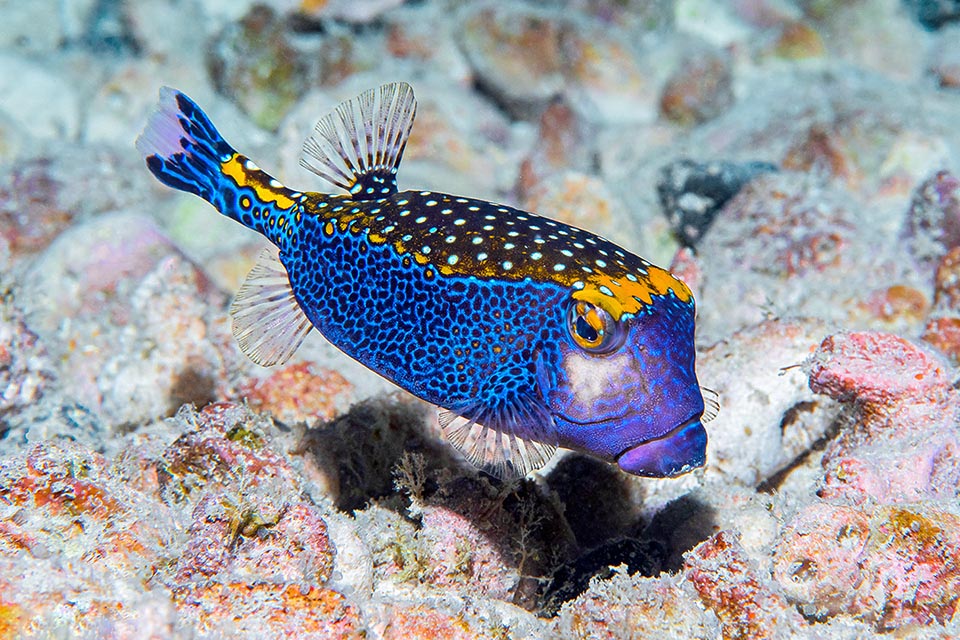
Ostracion meleagris is an about 20 cm boxfish frequent in the Indian Ocean and in the Pacific up to about 30 m of depth © Brian Cole
The Whitespotted boxfish (Ostracion meleagris Shaw, 1796) belongs to the class of Actinopterygii, the ray finned fishes, to the order of the Tetraodontiformes and to the family of the Ostraciidae, known as Coffer or Box fishes.
The name of the genus comes from the Greek “ostrakon” = shard, shell, with reference to the protecting under skin armour.
The species comes from the Latin “meleagris”, the name, which, after Pliny the Elder, Romans were giving to the guinea fowl, due to the colour and the white spotted pattern of the skin which evoke this bird, not by chance named by Linnaeus Numida meleagris.
Zoogeography
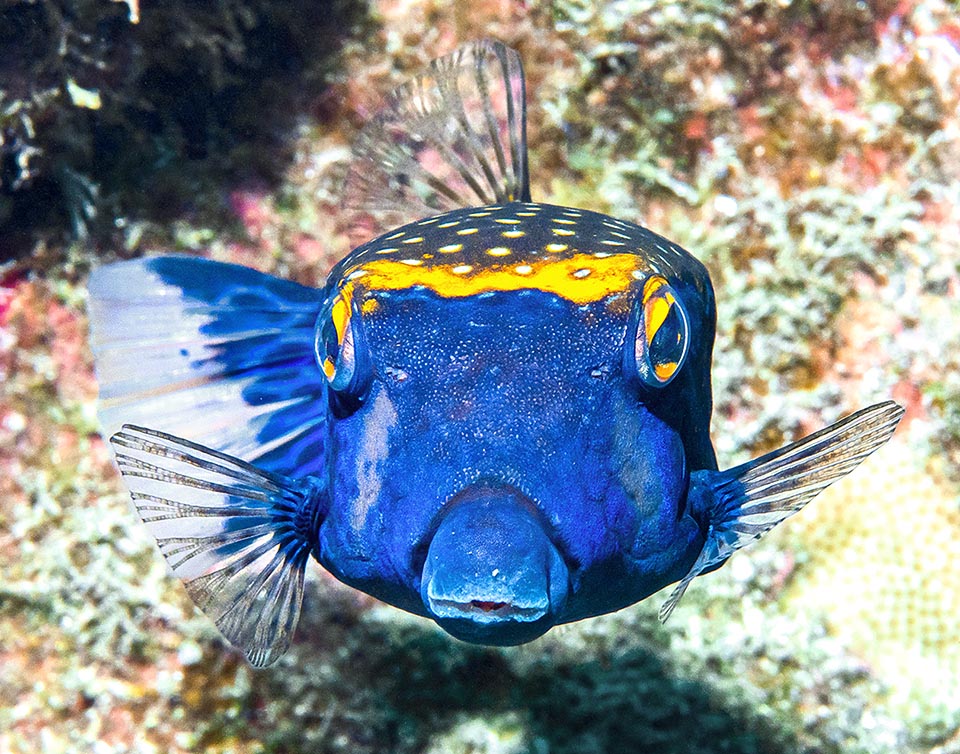
It eats weeds, sponges, ascidia, crustaceans, mollusks and small worms it dislodges with strong water jets on the seabed © Brian Cole
It is present in the Indian Ocean and in the Pacific up to the Mexican coasts. We find it, as an indication, from South Africa and East Africa to the Seychelles, Maldives, India, Sri Lanka, Thailand, Australia, Indonesia, New Guinea, Micronesia, Philippines, Taiwan and China up to southern Japan which forms, along with the Hawaii, the northern limit of the species. Southwards, it reaches the New Caledonia, Tuamotu and Lord Howe.
Ecology-Habitat
It lives in the madreporic formations up to about 30 m of depth. Usually, the adults live in the outer part of the reefs, whilst the juveniles often find shelter between the long spines of the tropical sea urchins anchored to the rocks.
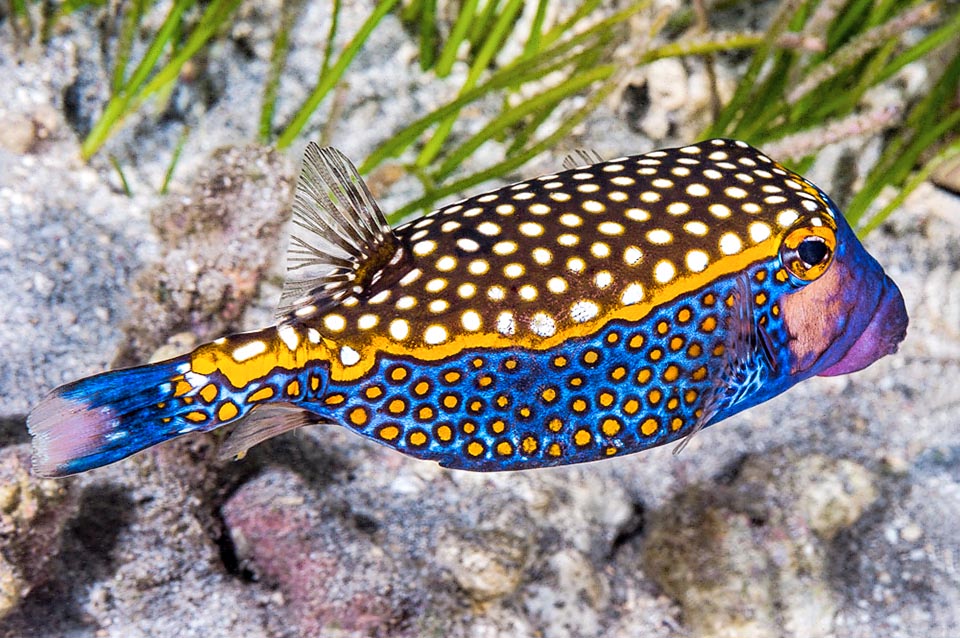
Male in the prime of its splendor. In the reproductive season it emits low-pitched sounds for attracting the females © François Libert
Morpho-physiology
The Ostracion meleagris has a trapezoidal section body and may reach the 25 cm of length, even if usually it rarely exceeds the 20 cm. Like all boxfishes, it has under the skin a carapace, formed by hexagonal plates, with holes for the eyes, the mouth, the spines and the anus. The ventral fins are absent, and the locomotion is entrusted to the undulations of the caudal and pectoral anal fins. The dorsal and the anal ones are used as helms, for slow but precise manoeuvrings.
The juveniles and the females are dark brown with innumerable small white spots.
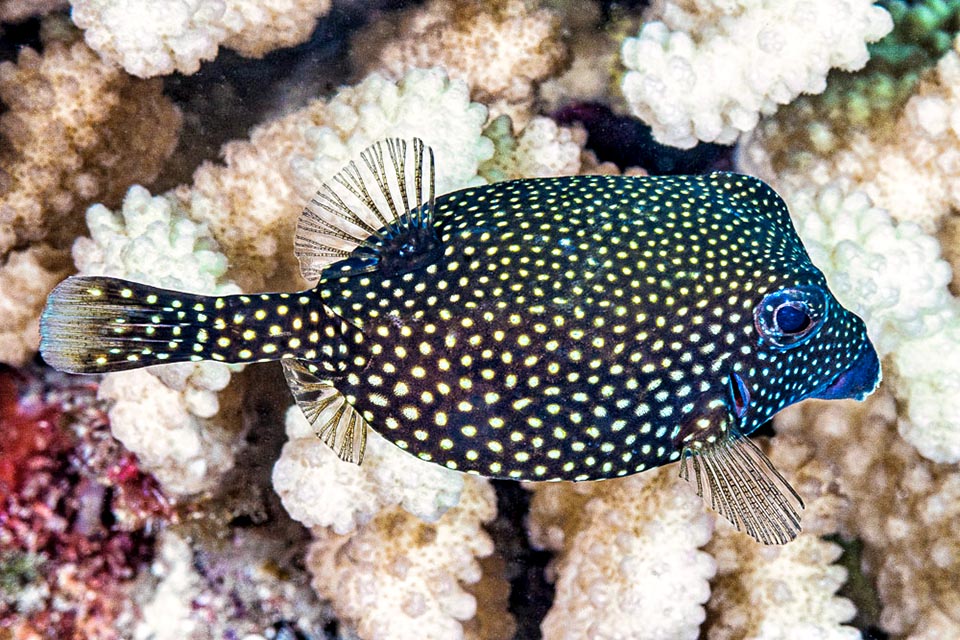
These have a much more sober mimetic livery, dark brown with white dots, but may, while growing, transform into males © François Libert
The adult males show a remarkable chromatic sexual dimorphism. Slightly bigger than the females, they have a similar livery on the back, but the sides, the extremity of the head and the caudal fin are blue. Some orange yellow small spots, edged of black, emphasize this hue, and a golden band connects the eyes and isolates the back with a wavy demarcation line.
Just to complicate the things, we have to add that this is a protogynous hermaphrodite species. The females, starting from a certain size, may therefore transform into males with intermediate liveries.
Like Ostracion cubicus also the Ostracion meleagris has the skin covered by poisonous mucus, which however, in this case, is much stronger.
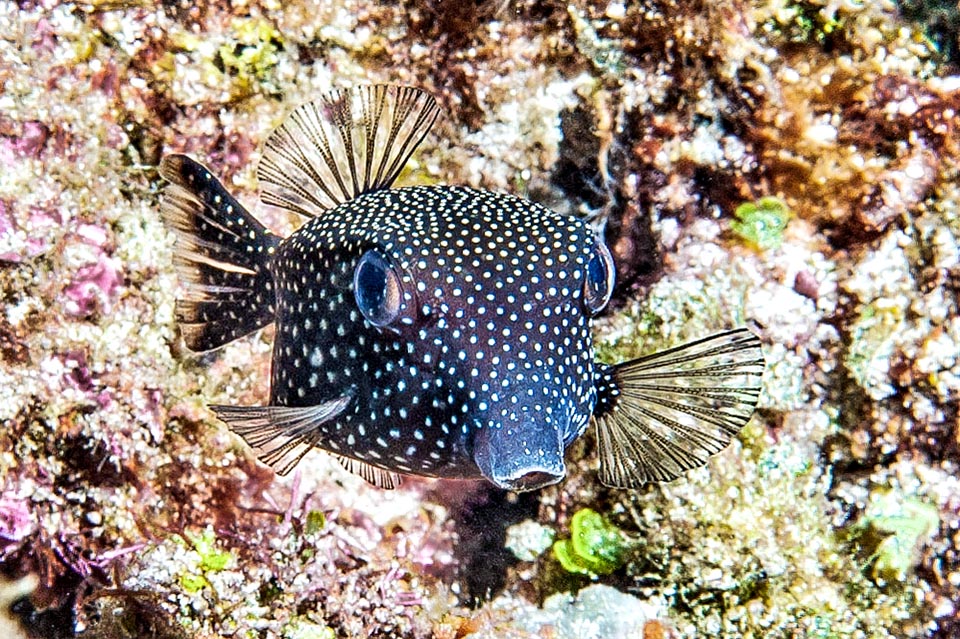
Juveniles have a similar livery and often find shelter among the long spines of the tropical sea urchins © François Libert
If it dies in a small pool, the dosage is such to kill in short time all the other fishes and may aver dangerous also for the man.
Ethology-Reproductive Biology
The Whitespotted boxfish nourishes of sea-weeds, sponges, ascidians, crustaceans, molluscs and small worms, seized with its protractile mouth which can remove the bottom with powerful jets of water. Usually, adults live solitary.
The males are more remarkable, but the females, especially in the reproductive period, stay around and form a small harem.
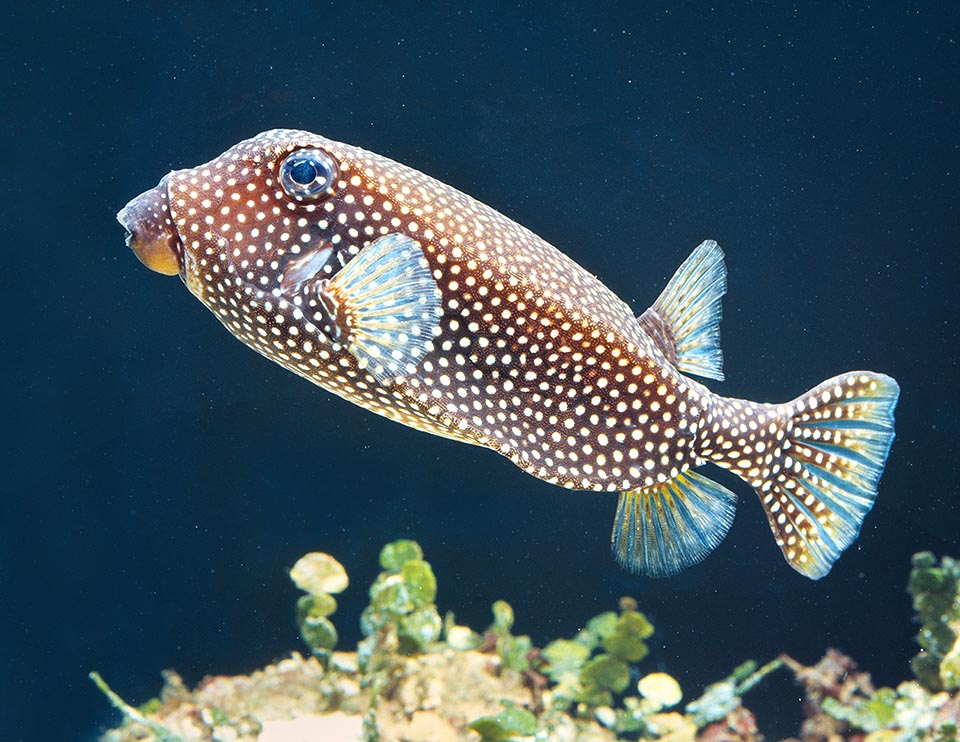
However they have no foes as the skin is imbued with a strong poison, the tetrodototoxin, and if they die in aquarium they release it in high doses often killing other fishes © Giuseppe Mazza
At the moment of the fecundation, the male emits a characteristic low-pitched sound, which attracts them and induces them to spawn. The fecundated eggs are entrusted to the currents. The populations can double in less than 15 months and seen that thanks to the strong poison they do not have predators, the vulnerability index of the species is very low.
Synonyms
Ostracion camurum Jenkins, 1901; Ostracion clippertonense Snodgrass & Heller, 1905; Ostracion lentiginosus Bloch & Schneider, 1801; Ostracion meleagris meleagris Shaw, 1796; Ostracion punctatus Bloch & Schneider, 1801; Ostracion sebae Bleeker, 1851.
→ For general information about FISH please click here.
→ For general information about BONY FISH please click here
→ For general information about CARTILAGINOUS FISH please click here.
→ To appreciate the BIODIVERSITY of BONY FISH please click here.
→ To appreciate the BIODIVERSITY of CARTILAGINOUS FISH please click here.
